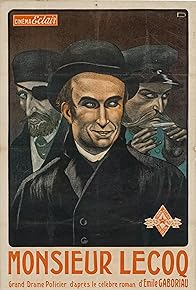
Already a subscriber?
Log In

Cast | + Add Cast |
| 6 cast members |
| Name | Known for |
|---|---|
William Morris
Monsieur Lecoq
|
|
Alphonse Ethier
Duke of Sairmuse
|
|
Florence La Badie
Duchess of Sairmuse
|
|
Reginald Barlow
Otto, the Duke's Valet
|
|
Julia Blanc
Mother Chupin
|
|
Morgan Jones
The First Judge
|